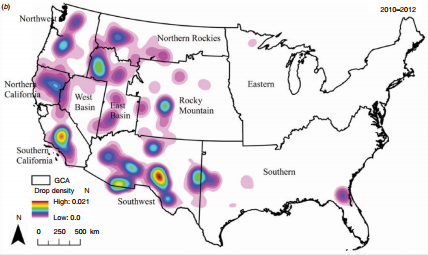Large airtanker use is widespread in wildfire suppression in the United States. The current approach to nationally dispatching the fleet of federal contract airtankers relies on filling requests for airtankers to achieve suppression objectives identified by fire managers at the incident level. In general, demand is met if resources are available, and the dispatch model assumes that this is both necessary and effective. However, proof of effectiveness under specific conditions of use in complex environments has not been empirically established. Researchers geospatially intersected historical drop data from the federal contract large airtanker fleet with operational and environmental factors to provide a post hoc assessment of conditions of use for the 2010-12 fire seasons in the conterminous United States. This work advances efforts to understand the economic effectiveness of aviation use in federal fire suppression.

